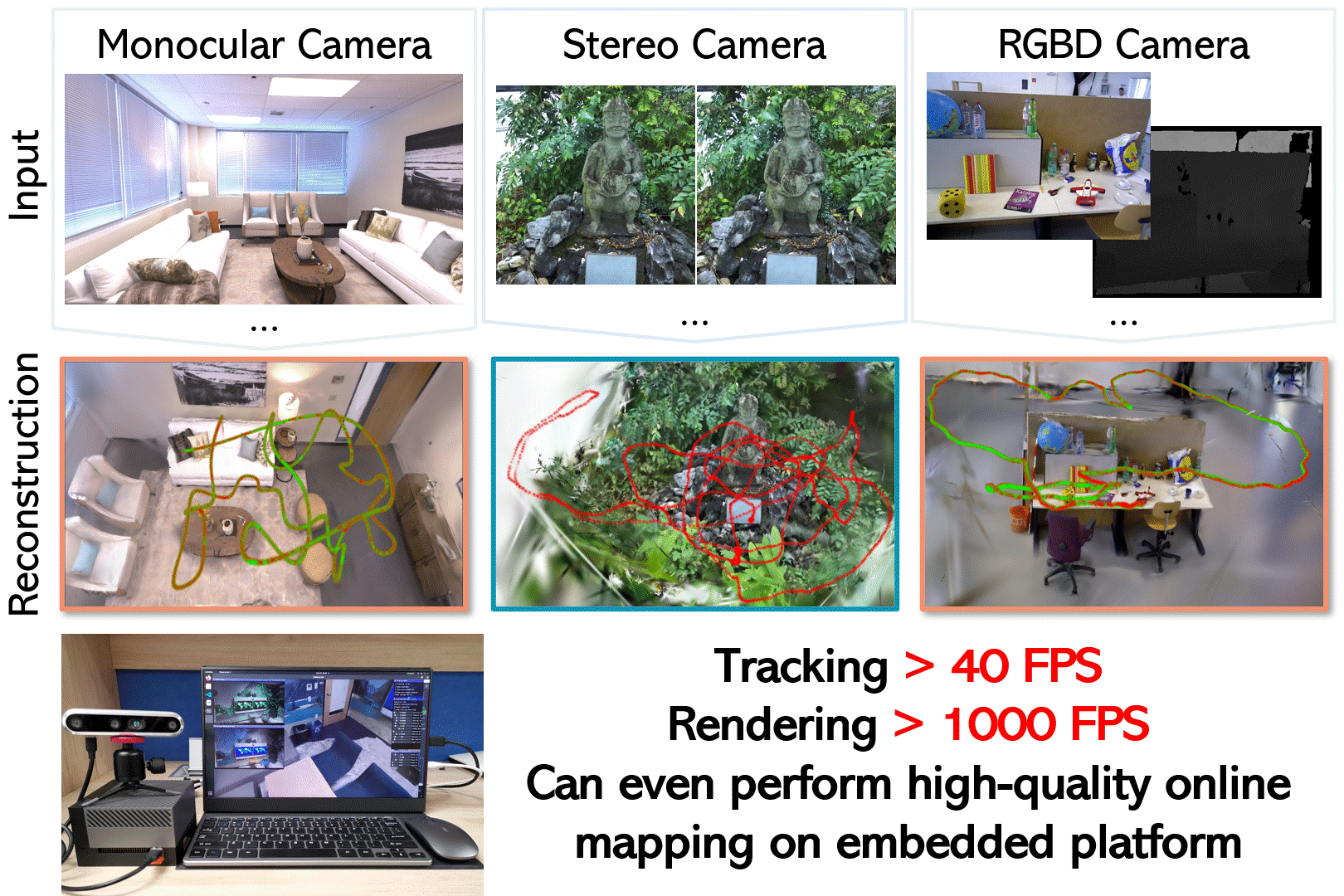Photo-SLAM Evaluation Toolkit
Homepage | Paper
Photo-SLAM: Real-time Simultaneous Localization and Photorealistic Mapping for Monocular, Stereo, and RGB-D Cameras
Huajian Huang1, Longwei Li2, Hui Cheng2, and Sai-Kit Yeung1
The Hong Kong University of Science and Technology1, Sun Yat-Sen University2
In Proceedings of Computer Vision and Pattern Recognition Conference (CVPR), 2024

Prerequisites
To use this toolkit, you have to ensure your results on each dataset are stored in the correct format. For example,
results
├── replica_mono_0
│ ├── office0
│ ├── ....
│ └── room2
├── replica_rgbd_0
│ ├── office0
│ ├── ....
│ └── room2
│
└── [replica/tum/euroc]_[mono/stereo/rgbd]_num ....
├── scene_1
├── ....
└── scene_nInstall required python packages
# You need to install a compatible Pytorch as well.
# such as conda install pytorch==2.1.2 torchvision==0.16.2 pytorch-cuda=11.8 -c pytorch -c nvidia
git clone https://github.com/HuajianUP/Photo-SLAM-eval.git
pip install evo numpy scipy scikit-image lpips pillow tqdm plyfile(Optional) Install submodel for rendering
# If you have installed original GS submodels, you can skip these steps.
pip install submodules/simple-knn/
pip install submodules/diff-gaussian-rasterization/Convert Replica GT camera pose files to suitable pose files to run the EVO package
python shapeReplicaGT.py --replica_dataset_path PATH_TO_REPLICA_DATASETCopy TUM camera.yaml to the corresponding dataset path
Since images on some sequences of TUM dataset contain distortion, we need to undistort the ground truth images before evaluation.
In addition, the file camera.yaml is used as an indicator in run.py.
cp TUM/fr1/camera.yaml PATH_TO_TUM_DATASET/rgbd_dataset_freiburg1_desk
cp TUM/fr2/camera.yaml PATH_TO_TUM_DATASET/rgbd_dataset_freiburg2_xyzEvaluation
To get all the metrics, you can run
python onekey.py --dataset_center_path PATH_TO_ALL_DATASET --result_main_folder RESULTS_PATHFinally, you are supposed to get two files including RESULTS_PATH/log.txt and RESULTS_PATH/log.csv.